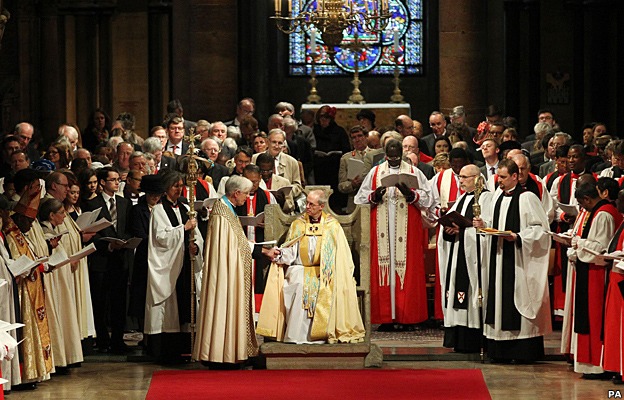MARCH 12, 2021 – Last Wednesday I wrote about “church town” U.S.A., which was a tad weird, given that I’m wholly unholy. Call it nostalgia or . . . the aging process amidst a world in constant tumult.
My earlier post, however, didn’t go inside any of the mentioned churches. That’s because I myself never went inside any except “our own” Trinity Episcopal Church, which, as I’d noted, was actually two churches—one built in 1858 and its 1965 replacement.
Now for a (kid’s) view inside the old one.
Built in frontier times, the sanctuary was simple. If the Episcopal Church had a lofty connection with the Church of England, in our Minnesota river town—surrounded by sand farms—“Episcopal” was anything but aristocratic. Trinity Church, my mother informed me, had been established as a “missionary” church, ministering to the indigenous heathens (the missionaries’ words, not hers).
Despite the church’s humble origins, good taste was on full display. Museum quality-stained glass windows lined the sides of the sanctuary. The pleasing proportions of the cathedral ceiling compensated for its limp green paint. On heavy chains suspended from the peak hung a row of lights over the central aisle. Each light was dressed in an elegant glass shade ringed with a painted, geometric motif. The stately oak pews, equipped with deep burgundy cushions, were matched by the kneeling pads. Looking down upon the modest chancel was a stained glass version of Plockhorst’s “Good Shepherd.” On either side of the altar were the solid oak, acolyte chairs, one of grand scale by the measure of our modest church. Its provenance was anything but of the frontier. From one corner of the chancel hung the pulpit—more solid oak to counter furtive doubts among Sunday worshipers.
The organist, Bernice Annon, sat just beyond other side of the chancel. She was old, wore a black beanie and a white vestment, which seemed divinely illuminated by the light of a wall-mounted, goose-neck lamp. I thought she was God—she didn’t speak to us using words, but the music she played conveyed something far more impressive.
At the back end of the sanctuary, a dark, over-sized oil painting of a religious scene was contained by a heavy, gold-painted frame. I wondered how it got there. It wasn’t what I associated with covered wagon “missionaries.”
No matter how familiar I became with the features of that sanctuary, they kept my imagination fully occupied while other minds wandered—or drifted in and out of consciousness.
By far, however, the most interesting fixture was the rector, Father Cyril P. Hanney. Born and reared in Wales, he’d attended seminary in Saskatchewan. His wife, Nell, was English, but their three kids, who matched up with my older two sisters and me, were given distinctly Welsh names—Gwennyth, Bronwyn, and Derwyn. Only God knew how the Hanneys wound up in the Halloween Capital of the World (so proclaimed by the Chamber of Commerce in the 1930s).
Now that I’ve mentioned him, I’ll definitely need to tell you more about Father Hanney. Stay tuned.
(Remember to subscribe to this blog and receive notifications of new posts by email.)
© 2021 by Eric Nilsson
